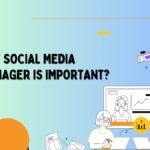Staying ahead of the competition and reaching your target audience is critical in the realm of digital marketing. Microsoft Advertising, formerly known as Bing Ads, provides a strong platform to assist you in achieving these objectives. Microsoft Advertising is a force to be reckoned with, with its distinct user base, innovative features, and expanding ecosystem. In this in-depth guide, we’ll go deep into the world of Microsoft Advertising, examine its merits, and present you with ideas and tactics for making the most of this platform.
Chapter 1: Getting Started with Microsoft Advertising
What is Microsoft Advertising?
Microsoft Advertising is an online advertising platform developed by Microsoft. It allows advertisers to display their ads on the Microsoft Search Network, which includes search engines like Bing, Yahoo, and AOL. With millions of users, Microsoft Advertising provides a substantial audience to reach potential customers.
Why Choose Microsoft Advertising?
- Bing’s Unique Audience: Microsoft Advertising reaches an audience that is often different from Google. With over 100 million unique searchers, Bing has a significant user base that might not be reachable through other search engines.
- Lower Competition: Microsoft Advertising typically has lower competition compared to Google Ads, which can lead to more cost-effective advertising campaigns.
- Quality Audience: Bing’s users tend to have higher income levels and are often more engaged, making them a valuable target audience for many businesses.
Setting Up Your Microsoft Advertising Account
- Create an Account: Go to the Microsoft Advertising website and create an account. You can use an existing Microsoft account or create a new one.
- Define Your Goals: Before you start creating your ads, it’s crucial to define your advertising goals. Are you looking to drive website traffic, increase sales, or boost brand awareness? Your goals will influence your campaign strategy.
- Keyword Research: Conduct thorough keyword research to identify the search terms your target audience is using. Microsoft Advertising provides keyword research tools to help you find the right keywords for your campaign.
- Budget and Bidding Strategy: Set your daily and monthly budget, and choose your bidding strategy. You can opt for manual bidding or automated bidding based on your preferences.
- Ad Copy and Creative: Create compelling ad copy and choose high-quality images or graphics for your ads. Your ad content should be relevant to the keywords you’re targeting.
- Geotargeting and Demographics: Define your target audience by specifying the geographic areas and demographics that your ads should reach.
Chapter 2: Creating Effective Microsoft Advertising Campaigns
Understanding Campaign Types
Microsoft Advertising offers several campaign types to suit different advertising objectives. These include:
- Search Campaigns: These campaigns display text ads on search engine results pages when users search for specific keywords. Search campaigns are the most common and versatile type.
- Shopping Campaigns: Ideal for e-commerce businesses, shopping campaigns display product listings with images, prices, and details.
- Display Campaigns: Display campaigns showcase image or video ads on websites within the Microsoft Advertising network, expanding your reach beyond search engines.
- Video Campaigns: Video campaigns allow you to advertise on platforms like YouTube and other video partners.
Choosing Keywords
Selecting the right keywords is the cornerstone of a successful campaign. Use the following tips:
- Use Keyword Research Tools: Leverage Microsoft Advertising’s keyword research tools to find relevant keywords for your niche.
- Focus on Relevant Keywords: Target keywords that directly relate to your products or services. Avoid broad or irrelevant keywords that may waste your budget.
- Utilize Negative Keywords: Exclude keywords that are not relevant to your business to avoid irrelevant traffic.
Crafting Compelling Ad Copy
Well-crafted ad copy can significantly impact your campaign’s success. Here are some best practices:
- Include Keywords: Incorporate relevant keywords in your ad copy to improve ad relevance.
- Highlight Benefits: Clearly communicate the benefits of your products or services in your ad.
- Call to Action: Use a strong and clear call to action (CTA) to encourage users to take the desired action.
- Ad Extensions: Utilize ad extensions to provide additional information to potential customers, such as location, callout extensions, and structured snippets.
Optimizing Landing Pages
Your ads should lead users to a relevant and well-optimized landing page. Consider the following:
- Relevance: Ensure that the landing page is closely related to the ad content and keywords.
- Loading Speed: A fast-loading page is essential to prevent users from bouncing.
- Mobile Optimization: With the increasing use of mobile devices, it’s crucial to have a mobile-optimized landing page.
- Clear Call to Action: Make it easy for users to take the desired action, whether it’s making a purchase, signing up for a newsletter, or contacting your business.
Chapter 3: Advanced Strategies for Microsoft Advertising Success
Utilizing Ad Extensions
Ad extensions are a valuable tool to enhance your ad’s visibility and provide more information to potential customers. Some popular ad extensions include:
- Sitelink Extensions: Provide links to specific pages on your website, such as product categories or contact pages.
- Callout Extensions: Highlight key benefits or features of your products or services.
- Location Extensions: Display your business address, making it easier for users to find your physical location.
- Structured Snippet Extensions: Showcase additional information about your business, such as product types or brands.
Ad Scheduling and Budget Management
Ad scheduling allows you to control when your ads are displayed. You can adjust your bids and budgets based on the time of day or day of the week when your target audience is most active. This helps you maximize the impact of your ad spend.
Remarketing Campaigns
Remarketing involves showing ads to users who have previously visited your website. It’s an effective strategy to re-engage potential customers and encourage them to complete a desired action, like making a purchase. Microsoft Advertising offers robust remarketing capabilities.
Competitive Analysis
Regularly monitor and analyze your competitors’ campaigns. Understand their strategies, keywords, and ad copy to identify opportunities and potential gaps in your own campaign.
Conversion Tracking and Analytics
Use conversion tracking to measure the success of your campaigns. Track key metrics such as conversions, click-through rates (CTR), and return on ad spend (ROAS). Microsoft Advertising provides integrated tools and supports third-party analytics platforms.
Chapter 4: Measuring and Optimizing Your Microsoft Advertising Campaigns
Key Performance Indicators (KPIs)
Measuring the performance of your Microsoft Advertising campaigns is essential to drive success. Here are some crucial KPIs to monitor:
- Click-Through Rate (CTR): The percentage of users who click on your ad after seeing it.
- Conversion Rate: The percentage of users who take the desired action after clicking on your ad.
- Cost Per Click (CPC): The cost you pay for each click on your ad.
- Return on Ad Spend (ROAS): The ratio of revenue generated to advertising spend.
- Quality Score: A measure of ad relevance, landing page quality, and expected click-through rate.
A/B Testing
A/B testing involves running two or more variations of an ad to determine which one performs better. Experiment with different ad copy, images, and landing pages to find the most effective combinations.
Optimization Tips
- Review and Refine Keywords: Regularly review and adjust your keyword list to ensure it remains relevant and effective.
- Ad Copy Testing: Continuously test different ad copies to identify which ones resonate best with your audience.
- Budget Optimization: Adjust your budget allocation based on the performance of individual campaigns and ad groups.
- Geotargeting Adjustments: Modify your geographic targeting to focus on high-performing regions.
Chapter 5: Staying Informed and Adapting to Changes
The digital advertising landscape is ever-evolving. To stay ahead, consider the following:
Stay Informed
Regularly read industry blogs, attend webinars, and follow Microsoft Advertising updates to keep up with the latest trends and features.
Adapt to Algorithm Changes
Search engine algorithms change, which can impact your ad rankings and visibility. Be prepared to adapt your strategy when necessary.
Test New Features
Microsoft Advertising introduces new features and tools regularly. Experiment with these features to see if they can benefit your campaigns.
Work with a Microsoft Advertising Partner
Consider partnering with a Microsoft Advertising Certified Partner for expert guidance and support in managing your campaigns.
Chapter 6: Case Studies – Real-World Success Stories
Let’s explore some real-world examples of businesses that have achieved success with Microsoft Advertising.
Case Study 1: E-commerce Retailer
An e-commerce retailer saw a 32% increase in revenue by running shopping campaigns on Microsoft Advertising. By optimizing product listings and targeting the right keywords, they attracted more qualified traffic and increased their sales.
Case Study 2: Local Service Business
A local service business, such as a plumbing company, used Microsoft Advertising to target users in specific geographic areas. They experienced a 45% increase in leads and appointments, thanks to geotargeting and ad scheduling.
Case Study 3: Software Company
A software company expanded its reach by running display campaigns on Microsoft Advertising. By utilizing responsive ads and targeting technology-related websites, they reached a broader audience and achieved a 28% increase in trial sign-ups.
Chapter 7: Common Mistakes and How to Avoid Them
Even the most experienced advertisers can make mistakes. Here are some common pitfalls to avoid:
- Neglecting Mobile Optimization: With the growth of mobile users, ignoring mobile optimization can be a costly mistake.
- Overlooking Negative Keywords: Failing to add negative keywords can lead to wasted ad spend on irrelevant traffic.
- Ignoring Ad Extensions: Ad extensions can improve ad visibility and engagement. Don’t underestimate their impact.
- Not Regularly Checking Performance: Failing to monitor and optimize your campaigns can lead to missed opportunities.
Conclusion: Maximizing Your Potential with Microsoft Advertising
Microsoft Advertising offers a powerful platform to reach a diverse and engaged audience. By understanding its features, implementing effective strategies, and continuously optimizing your campaigns, you can tap into the immense potential this advertising platform provides. As you embark on your Microsoft Advertising journey, remember that success requires constant learning, adaptation, and a commitment to staying at the forefront of digital advertising trends. So, create your account, launch your campaigns, and watch your business grow with Microsoft Advertising.
Start your journey today and harness the immense potential of Microsoft Advertising to propel your business to new heights.
This comprehensive guide provides an overview of Microsoft Advertising, from the basics of setting up an account to advanced strategies and optimization techniques. Use this information as a roadmap to make the most of Microsoft Advertising and drive success in your digital marketing efforts.





